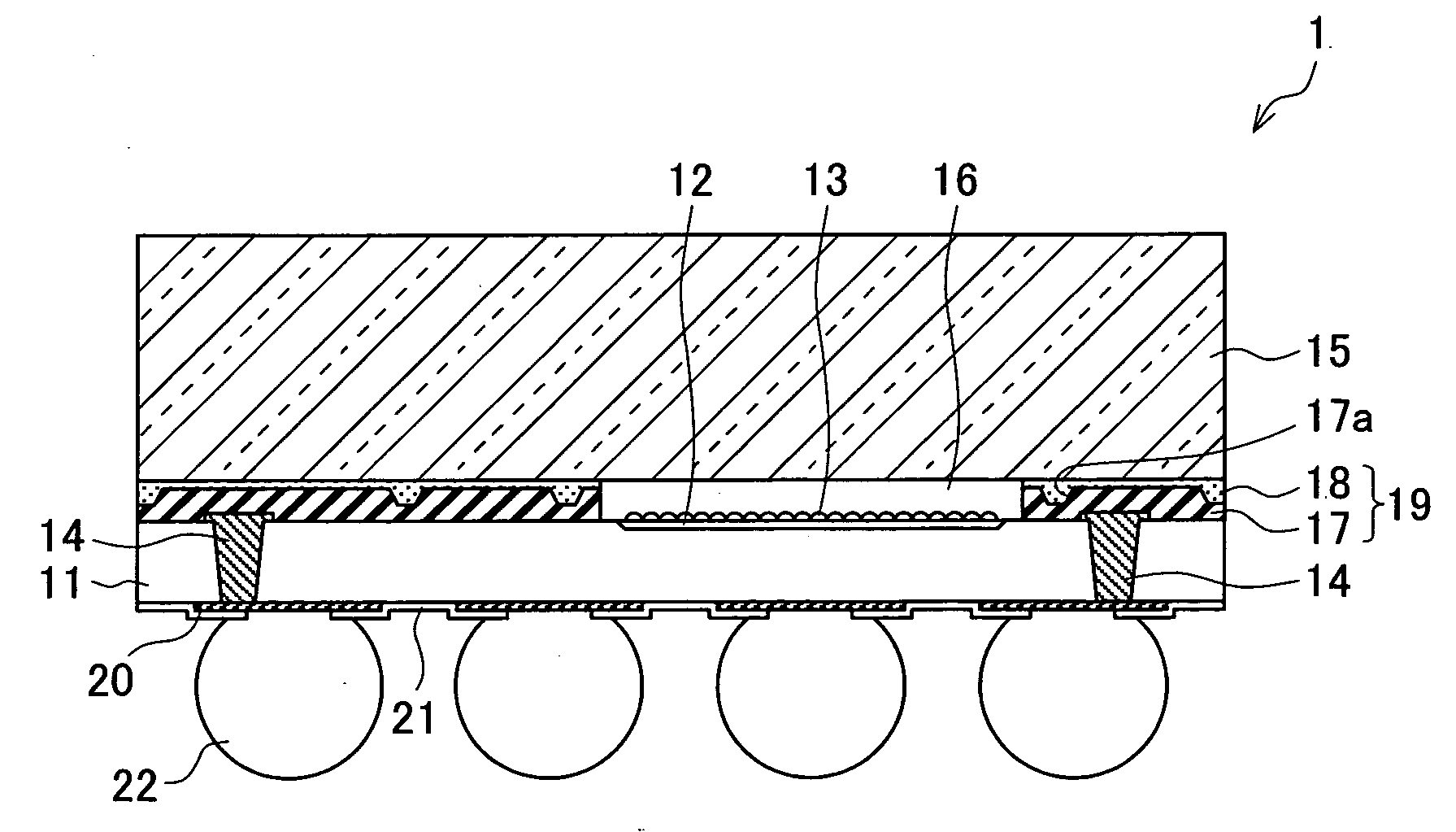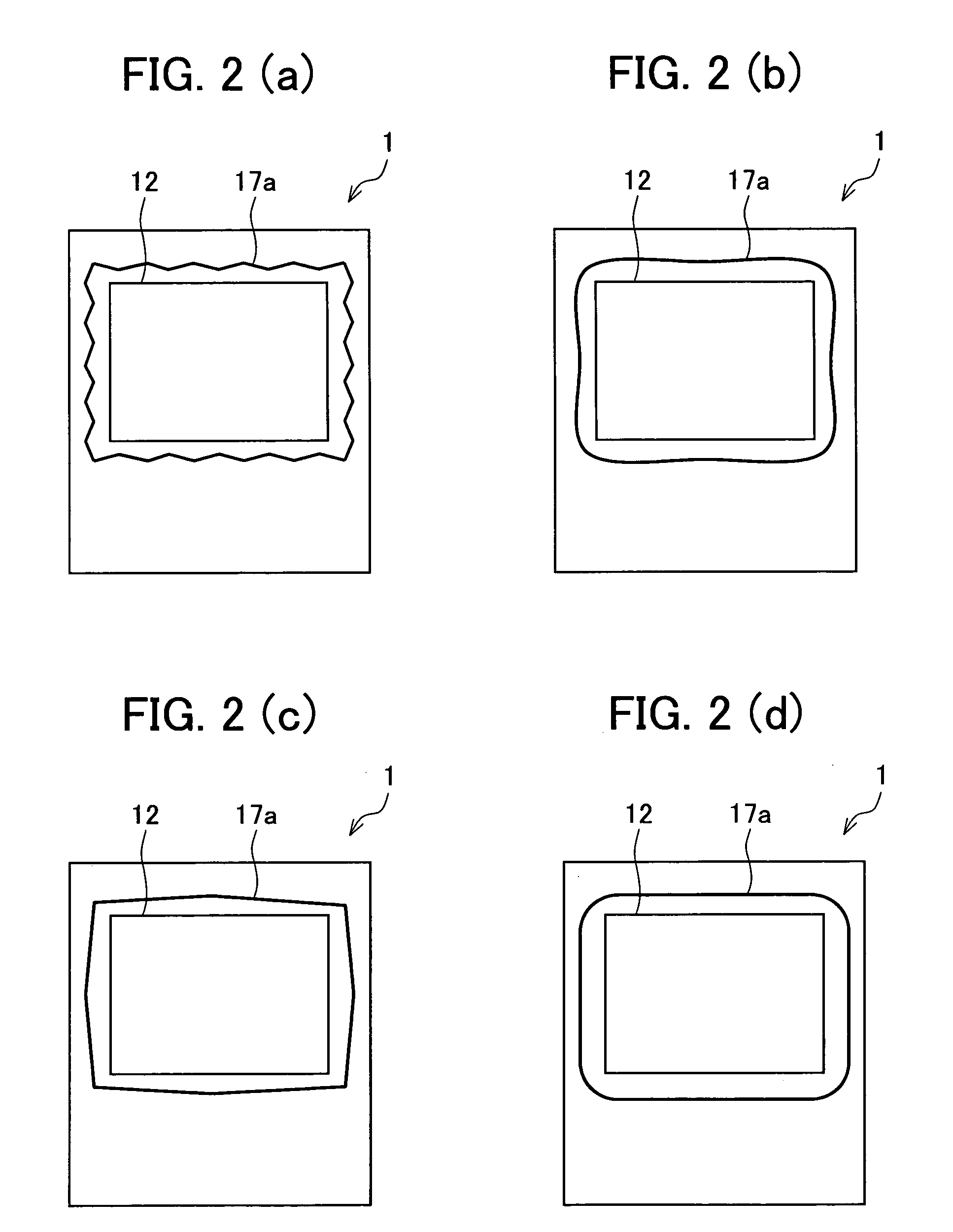Semiconductor device and production method thereof
a technology of semiconductor devices and production methods, applied in the direction of tv systems, lighting and heating apparatus, rod connections, etc., can solve the problems of inability to realize a wafer level csp, inability to collect light, and light incident from low-melting glass, etc., to achieve the effect of inexpensive per-piece cost of a material
- Summary
- Abstract
- Description
- Claims
- Application Information
AI Technical Summary
Benefits of technology
Problems solved by technology
Method used
Image
Examples
Embodiment Construction
[0028] An embodiment of the present invention is explained below with reference to FIGS. 1 through 5.
[0029]FIG. 1(a) is a plan view illustrating a structure of a semiconductor device 1 according to an embodiment of the present invention. FIG. 1(b) is a longitudinal sectional view illustrating the structure of the semiconductor device 1.
[0030] As illustrated in FIGS. 1(a) and 1(b), the semiconductor device 1 includes a semiconductor substrate 11 whose shape is rectangular when seen in a plan view. The semiconductor substrate 11 is a flat plate made of Si for example. An imaging element 12 whose shape is rectangular when seen in a plan view is formed on one side of the semiconductor substrate 11. The imaging element 12 is made by arraying a plurality of pixels that serve as a light reception sensor. A micro lens section 13 is formed on a face having the imaging element 12 thereon (corresponding to an active-element-formed face recited in claims). In order to increase a light collect...
PUM
 Login to View More
Login to View More Abstract
Description
Claims
Application Information
 Login to View More
Login to View More - R&D
- Intellectual Property
- Life Sciences
- Materials
- Tech Scout
- Unparalleled Data Quality
- Higher Quality Content
- 60% Fewer Hallucinations
Browse by: Latest US Patents, China's latest patents, Technical Efficacy Thesaurus, Application Domain, Technology Topic, Popular Technical Reports.
© 2025 PatSnap. All rights reserved.Legal|Privacy policy|Modern Slavery Act Transparency Statement|Sitemap|About US| Contact US: help@patsnap.com



